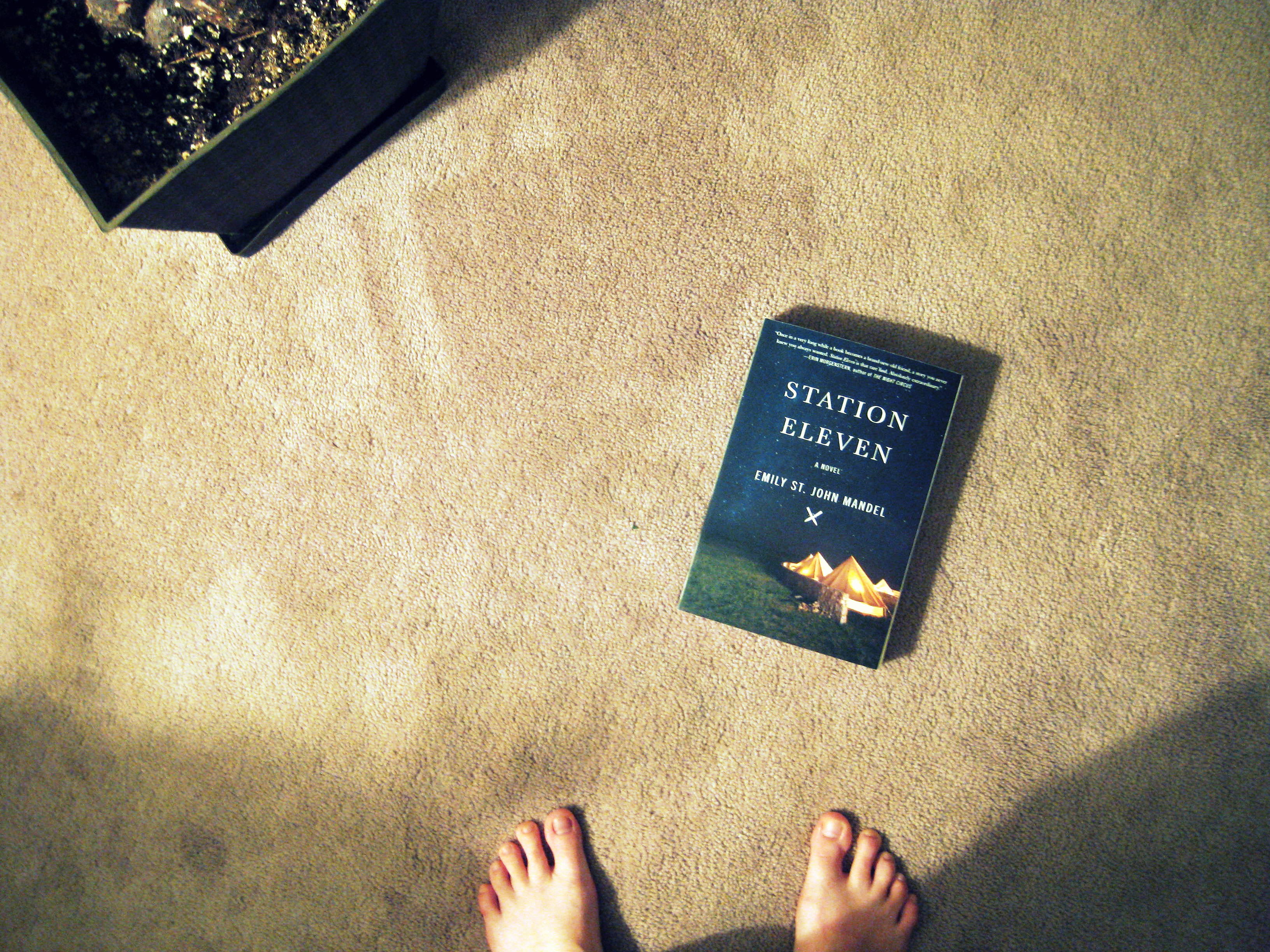So, I’ve taken a bit of a break from both my #ReadHarder challenge and Canada Reads 2015 if you hadn’t noticed. I got the flu a little while ago and while I’ve been playing catch up in my life I decided to treat myself by falling headlong into the haunting Station Eleven by Emily St. John. I’ve also gotten a case of reader’s fatigue–my pace is slower and it’s more difficult to focus on the page for a long time. But worry not! I am indeed back and making my way through the Read Harder list while I wait for my holds on the rest of the Canada Reads novels to come through.
I consider Station Eleven to be Canadian fiction since St. John is an ex-pat from the West coast and central parts of the novel take place in Toronto. Classifying St. John’s book is not easy. She leaps across genre lines and quantifiers with a beautiful story taking place before, during, and after the end of human society. With an expert hand, St. John carries readers back and forth between the pre-apocalyptic, apocalyptic, and post-apocalyptic worlds. And it works.
Personally, apocalyptic fiction has never been my forte–I shrank back from the Hunger Games all through high school and while I enjoy the Walking Dead I find I can’t immerse myself in it too deeply without becoming depressed. Station Eleven is a breath of fresh air in this category, moving beyond the constant gloom-and-doom to examine humanity more closely. Not just the horrible things that people, can and will do, but the things people do beyond survival–they create art.
Enter the Travelling Symphony, a nomadic group of survivors from the Georgia Flu (the killer virus and harbinger of their apocalyptic world) who journey across the “towns” which remain to perform Shakespeare and play classic symphony pieces. Their caravan proclaims their motto: “Because survival is insufficient” a Star Trek: Voyager reference. The theatre, comic books, and science fiction play a large role in the characters lives both before and years after the Georgia Flu epidemic. Adding, what I think, is a necessary injection of the arts to a style of fiction which is often focused more on the how of survival versus the why. And often the answer is pretty bleak.
Perhaps as an Arts student this notion pulls at my heart strings. Station Eleven is really a story about humanity (and the humanities) at the end of the world as we know it. Marvel at the extraordinary technological accomplishments which are lost–planes, cars, electricity, smart phones are all useless in this world. Yet, somehow A Midsummer Night’s Dream survives and is still relevant to the people who lived. People die of infection from stepping on a rusty nail but a desire for music, newspapers, and museums carries on in the weary people twenty years down the line in St. John’s world.
She adds even more oomph by creating characters who are dynamic and fascinating–each a case study of human beings. Backstory and backstory of backstories play a huge role in the book. At times I admit it can be a bit tedious, some of the jumps are a little awkward but those are easily overshadowed by the great transitions which are woven into the novel. At some key point even the most minor of characters get the spotlight treatment. Truly, Station Eleven is a story for the lover of humanities and anyone who has ever thought what would happen if society had to rebuild. Maybe it is too optimistic, but it makes you think–really think–about the sociological nature of human beings, and of course, comic books.

